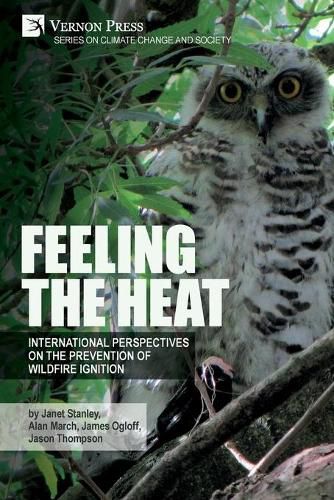Readings Newsletter
Become a Readings Member to make your shopping experience even easier.
Sign in or sign up for free!
You’re not far away from qualifying for FREE standard shipping within Australia
You’ve qualified for FREE standard shipping within Australia
The cart is loading…






This title is printed to order. This book may have been self-published. If so, we cannot guarantee the quality of the content. In the main most books will have gone through the editing process however some may not. We therefore suggest that you be aware of this before ordering this book. If in doubt check either the author or publisher’s details as we are unable to accept any returns unless they are faulty. Please contact us if you have any questions.
In the context of climate change, world population growth and crashing ecological systems, wildfire is often a catastrophic and traumatic event. Its impact can include loss of life, life-changing injuries, long-term psychological stress; increases in domestic violence; destruction of properties, business and livestock; long-term housing insecurity; increased insurance premiums, fire-fighting, legal and health costs; as well as significant changes and species losses in the natural environment.
In Australia, an average of 4,500 wildfires occur weekly. Yet how to prevent these wildfires, 85% of which are caused by human activities, has received extraordinarily little attention. The current approach to the prevention of arson can be summarised as small in scale, uncoordinated and rarely evaluated. ‘Feeling the heat: International perspectives on the prevention of wildfire ignition’ is the culmination of over a decade of research into wildfires and arson; taking an interdisciplinary approach to comprehensively understand the topic.
This book reviews current international knowledge and presents new findings on political, spatial, psychological, socio-ecological and socio-economic risk factors. It argues that if we are to reverse the increasing occurrence and severity of wildfires, all prevention approaches must be utilised, broadening from heavy reliance on environmental modification. Such prevention measures range from the critical importance of reducing greenhouse gases to addressing the psychological and socio-economic drivers of arson. In particular, it calls for a coordinated and collaborative approach across sectors, including place-based, state and country coordination, as well as an international body. It will hold appeal for researchers and students from a range of disciplines and interests, government planners and policymakers, emergency services, counsellors and NGOs, and those in agriculture and forestry.
$9.00 standard shipping within Australia
FREE standard shipping within Australia for orders over $100.00
Express & International shipping calculated at checkout
This title is printed to order. This book may have been self-published. If so, we cannot guarantee the quality of the content. In the main most books will have gone through the editing process however some may not. We therefore suggest that you be aware of this before ordering this book. If in doubt check either the author or publisher’s details as we are unable to accept any returns unless they are faulty. Please contact us if you have any questions.
In the context of climate change, world population growth and crashing ecological systems, wildfire is often a catastrophic and traumatic event. Its impact can include loss of life, life-changing injuries, long-term psychological stress; increases in domestic violence; destruction of properties, business and livestock; long-term housing insecurity; increased insurance premiums, fire-fighting, legal and health costs; as well as significant changes and species losses in the natural environment.
In Australia, an average of 4,500 wildfires occur weekly. Yet how to prevent these wildfires, 85% of which are caused by human activities, has received extraordinarily little attention. The current approach to the prevention of arson can be summarised as small in scale, uncoordinated and rarely evaluated. ‘Feeling the heat: International perspectives on the prevention of wildfire ignition’ is the culmination of over a decade of research into wildfires and arson; taking an interdisciplinary approach to comprehensively understand the topic.
This book reviews current international knowledge and presents new findings on political, spatial, psychological, socio-ecological and socio-economic risk factors. It argues that if we are to reverse the increasing occurrence and severity of wildfires, all prevention approaches must be utilised, broadening from heavy reliance on environmental modification. Such prevention measures range from the critical importance of reducing greenhouse gases to addressing the psychological and socio-economic drivers of arson. In particular, it calls for a coordinated and collaborative approach across sectors, including place-based, state and country coordination, as well as an international body. It will hold appeal for researchers and students from a range of disciplines and interests, government planners and policymakers, emergency services, counsellors and NGOs, and those in agriculture and forestry.